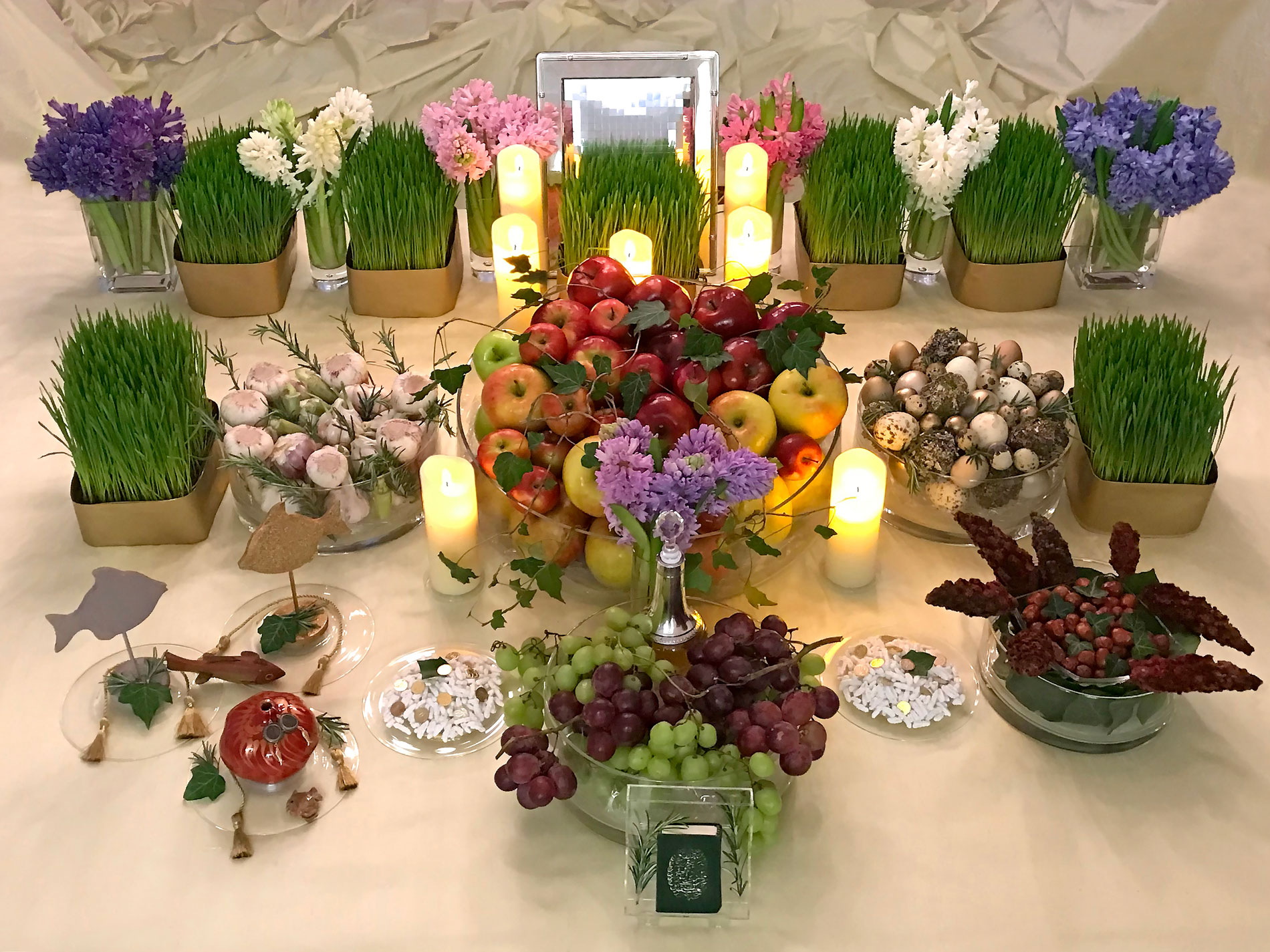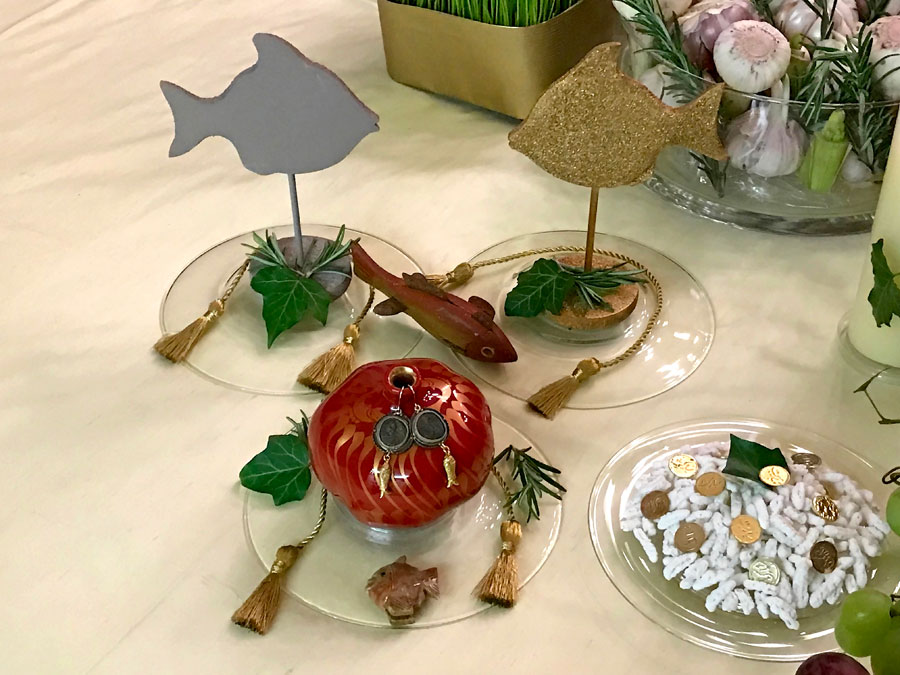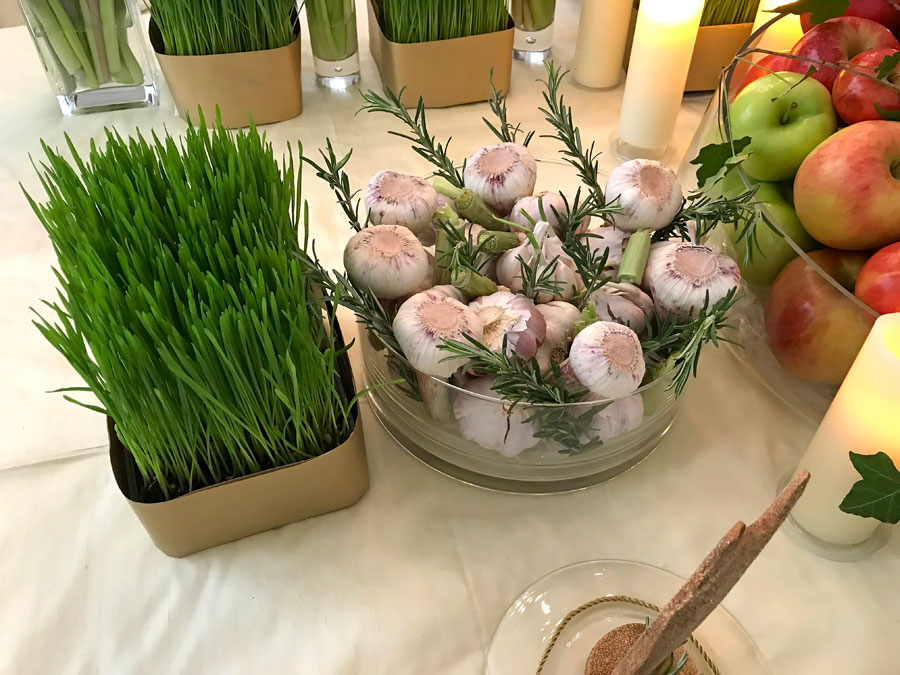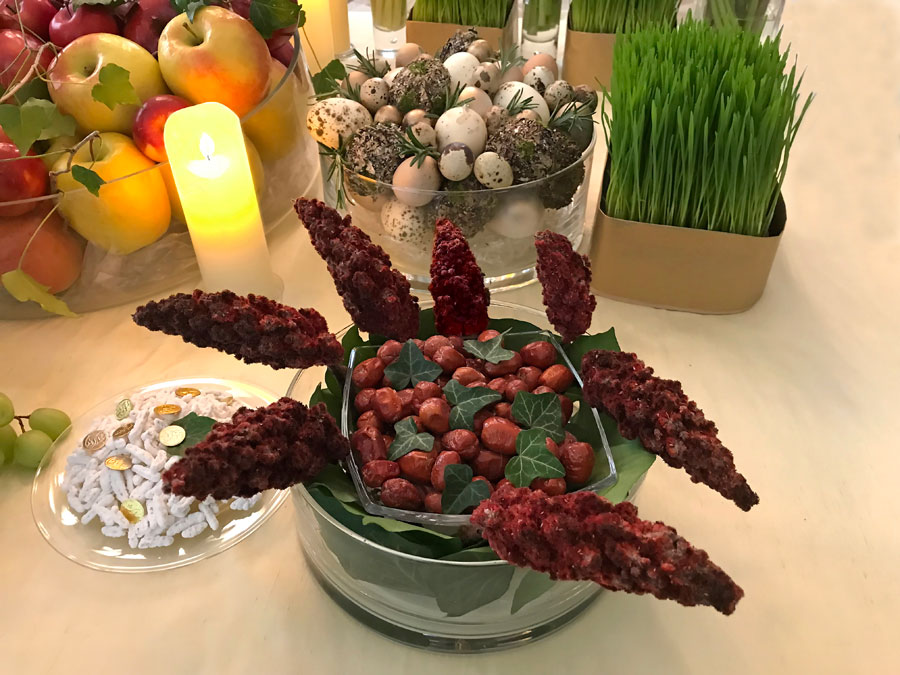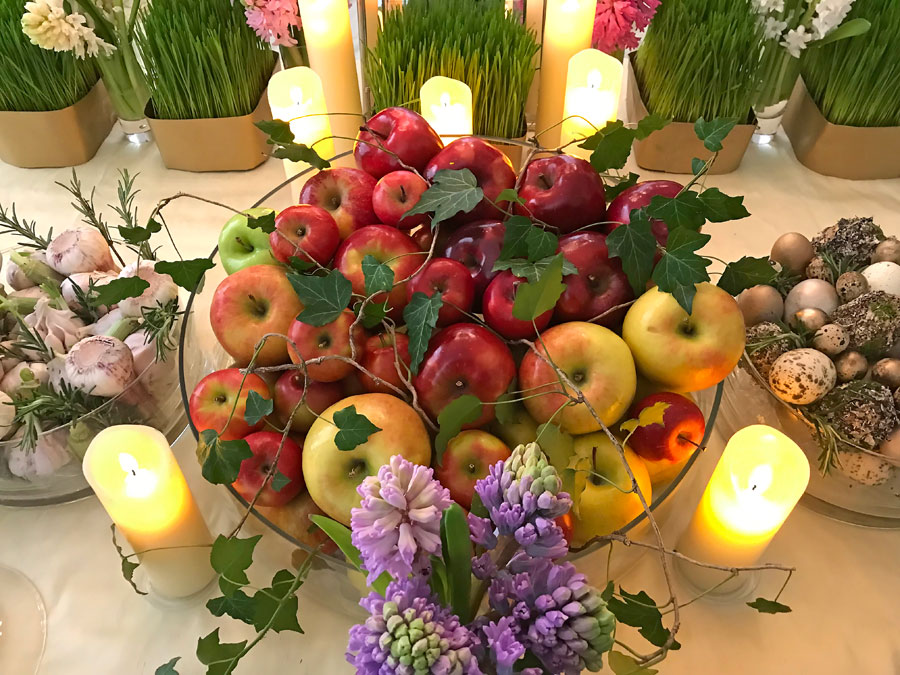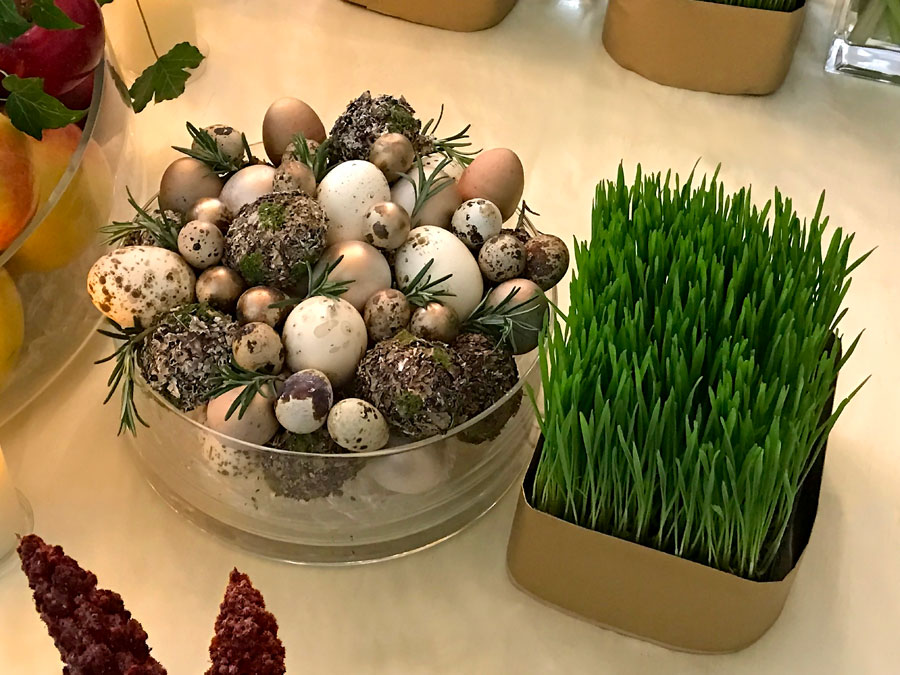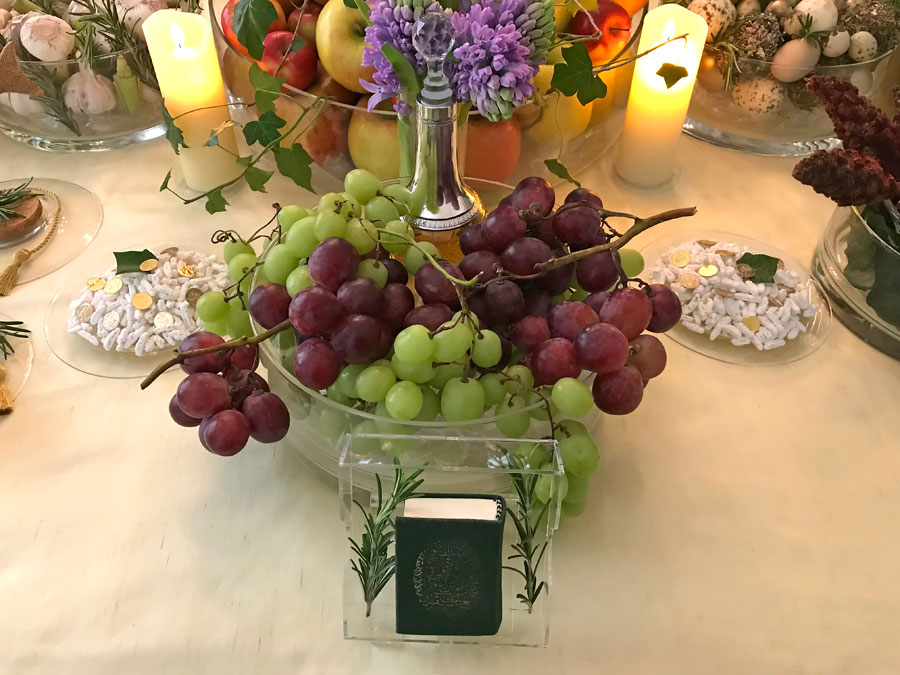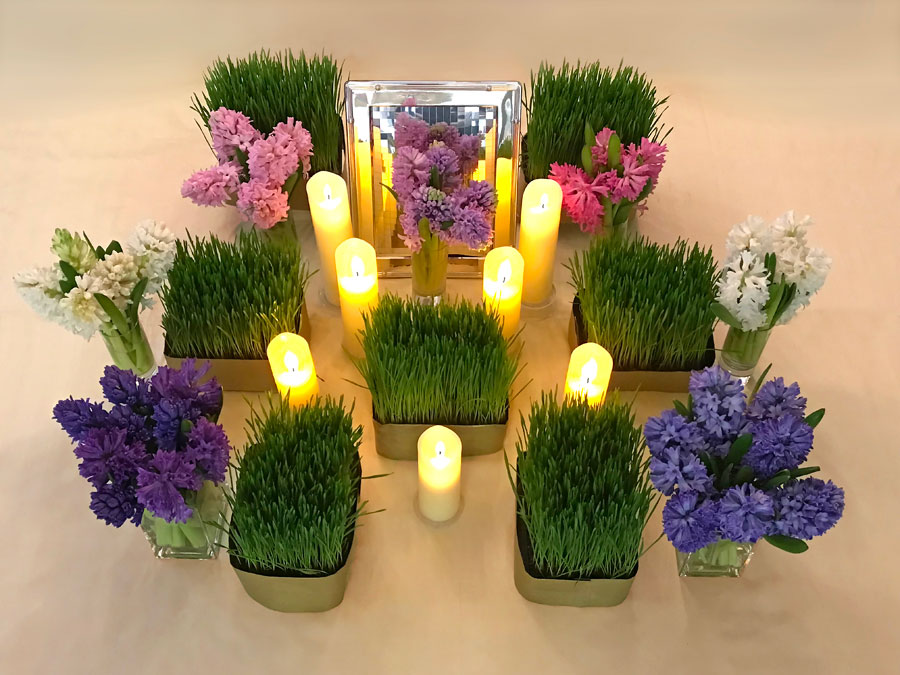Seven (Haft)
The title of this sofreh-ye haft sinn, designed for a private exhibition for the celebrations of Nowruz of 2024, is simply “Seven (Haft)”. Creatively, to emphasize the importance of the number seven (haft), this original sofreh showcases seven blocks of germinated wheat (sabzeh, the essence of this spring festival), seven statuettes/images of fish, seven varieties/shades of apples (sib), seven pillar candles and seven different shades of hyacinths (sonbol).
This is the overall view of the impressive sofreh-ye haft sinn, entitled “Seven (Haft)”. The traditional symbolic elements, namely garlic (sir), vinegar (serkeh), gilded coins (sekkeh), sumac (somaq), jujube fruit (senjed), germinated wheat (sabzeh), statuettes/images of fish, apples (sib), hyacinths (sonbol), candles, sweets, decorated eggs, a mirror and a miniature volume of the Qur’an, are all on display.
This is a section of the sofreh-ye haft sinn, entitled “Seven (Haft)”, showcasing seven representations of fish, substituting live goldfish (mahi). As water creatures, fish are a symbol of Anahita and signify plenitude and blessings, among other virtues. Here a pair of fish sculptures in gold and silver replicates the colour scheme of the book. An antique wooden statuette of goldfish, a fish carved out of a semi-precious stone, a pair of ancient gold sculptured fish and images of fish painted on a ceramic pomegranate, embellished with fine gold tassels, ivy leaves and sprigs of rosemary, are on display.
The left corner of the sofreh-ye haft sinn, entitled “Seven (Haft)”, is dedicated to presenting a stunning display of ample, fresh garlic bulbs, embellished with fragrant sprigs of rosemary. Garlic (sir) is one of the important components of the sofreh-ye haft sinn and is valued for its medicinal and evil-averting faculties. The block of germinated wheat (sabzeh), the essence of this spring festival and a symbol of rebirth, sets off the beauty of the container of the fresh bulbs of garlic.
This image focuses on an impressive display of clusters of sumac and jujube fruits, which is part of the sofreh-ye haft sinn, entitled “Seven (Haft)”. Sumac (somaq) is a symbol of plenty and peace, and senjed (jujube fruit, sometimes translated as Russian olive) represents love and rebirth. This delightful miniature composition in deep-red tones is elegantly embellished with delicate leaves of ivy.
At the heart of the sofreh-ye haft sinn, entitled “Seven (Haft)”, sits a spectacular display of seven different varieties and shades of apples embellished with branches of graceful trailing ivy and illuminated with several pillar candles. As indicated in SOFREH: The Art of Persian Celebration, apples (sib), which are among the divine fruits (miveh-ye beheshti), signify fertility, birth and growth, and are a symbol of health of individuals and society. They are given to friends and relatives prior to Nowruz to place on the sofreh.
The right corner of the sofreh-ye haft sinn, entitled “Seven (Haft)”, is dedicated to presenting an elegant display of decorated eggs, embellished with fragrant sprigs of rosemary. This corner creates symmetry with the opposite corner showcasing the display of bulbs of garlic. Eggs are also one of the important components of the sofreh-ye haft sinn, symbolizing life and fertility. The block of germinated wheat (sabzeh), the essence of this spring festival and a symbol of rebirth, sets off the beauty of the container of tastefully decorated eggs.
This is the front of the sofreh-ye haft sinn, entitled “Seven (Haft)”, showcasing vinegar (serkeh), surrounded by loose-hanging bunches of deep-red and green grapes. Serkeh, which is an important component of the sofreh-ye haft sinn, is a symbol of patience and is cherished for its medicinal properties. A miniature volume of the Qur’an is elegantly displayed inside a perspex box embellished with sprigs of fragrant rosemary.
To better showcase the central section of the sofreh-ye haft sinn, entitled “Seven (Haft)”, and to re-emphasize the importance of the number seven, the seven pillar candles, the seven blocks of germinated wheat (sabzeh) and the bouquets of hyacinths (sonbol) in seven different shades have been rearranged here around and in front of the mirror. Finding hyacinths in so many different shades was not possible in the past. Hence it is most appropriate to exploit the present selection on offer. Hyacinths lend beauty to the sofreh, heralding the beginning of spring, and their sweet scent perfumes the air.

